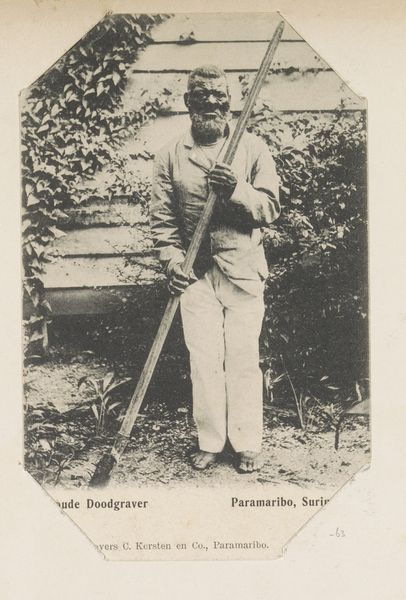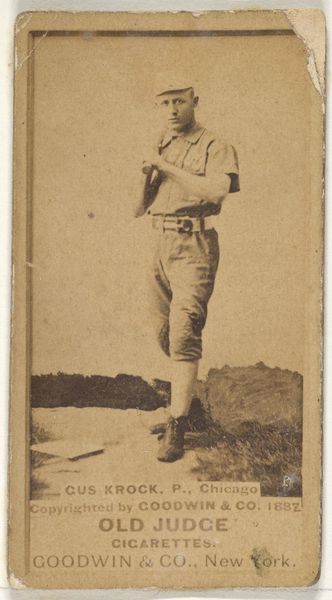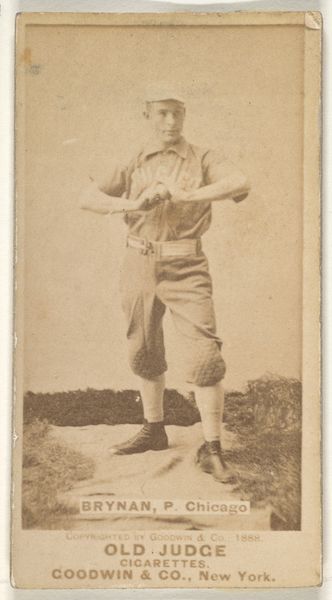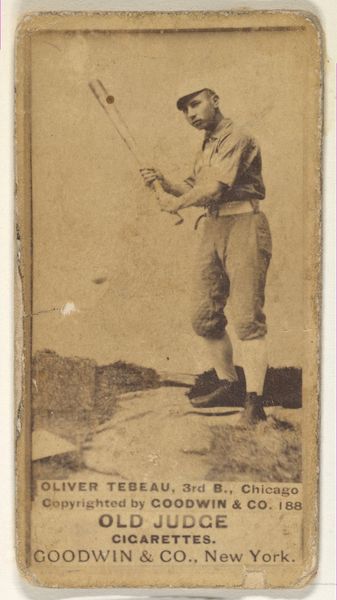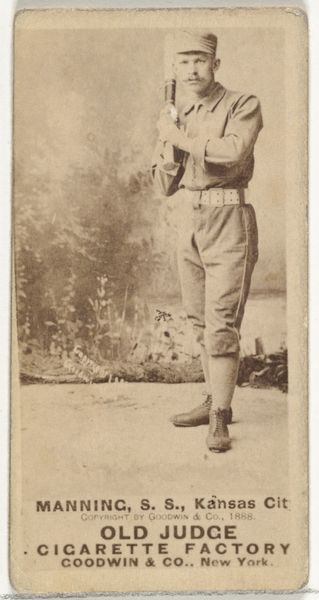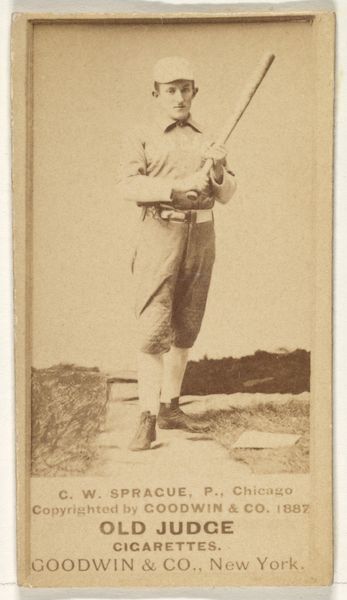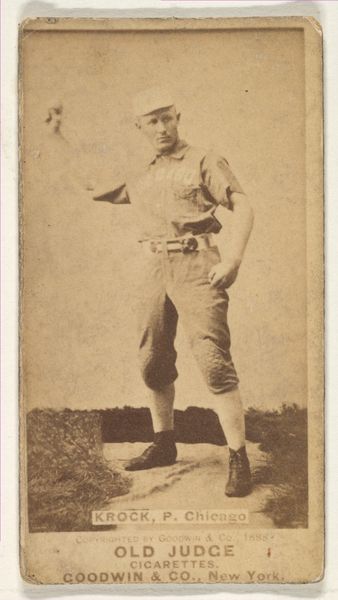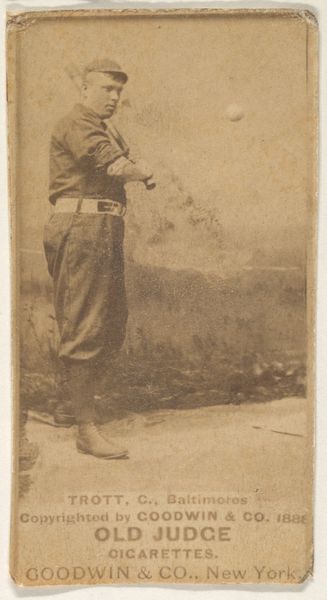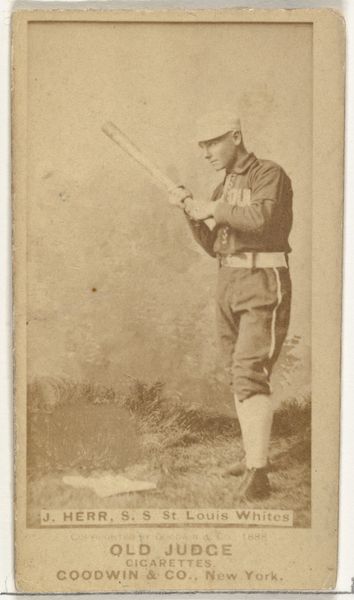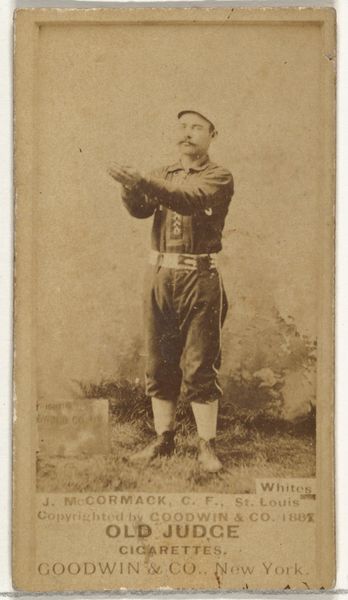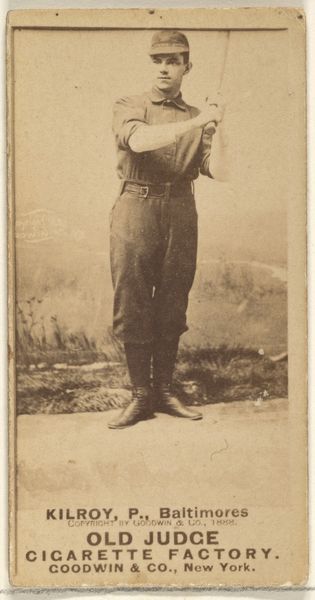
photography, gelatin-silver-print
#
portrait
#
print photography
#
dutch-golden-age
#
social-realism
#
archive photography
#
photography
#
group-portraits
#
gelatin-silver-print
#
history-painting
Dimensions: height 5.5 cm, width 8 cm
Copyright: Rijks Museum: Open Domain
Curator: This photograph, "Jongens van de Jeugdstorm met de Nederlandse vlag," translating to "Boys of the Youth Storm with the Dutch Flag," possibly taken between 1934 and 1935, is a gelatin silver print held here at the Rijksmuseum. It’s quite a stark image. Editor: Yeah, it hits you with this...I don't know...uniform solemnity. All these boys lined up, looking somewhere just past the camera. It's oddly staged and... unsettling? Curator: The photograph provides insight into the Jeugdstorm, the youth organization affiliated with the Nationaal-Socialistische Beweging, or NSB, the Dutch National Socialist movement. It is useful when interrogating ideas about nationalism, conformity, and indoctrination within the context of pre-war Netherlands. Editor: Indoctrination's the word. I mean, look at them. So young, trying to look serious, but they mostly just look like kids playing dress-up, which, in a way, they were, right? The flag in the background... it’s supposed to inspire pride, but here it feels more like a threat. Curator: Exactly. Consider the visual language employed. The ordered ranks, the uniformity of dress, all these design elements evoke a sense of discipline and control, underscoring the NSB's aspirations for societal transformation through hierarchical structures and obedience. The black and white further enhances the tone. Editor: And it's cropped tight, too, focusing all the attention on them. Almost like they're specimens pinned for observation. The one adult we see from the back feels imposing, holding that stick like a symbol of...well, control is the first word that jumps to mind. It’s almost terrifying what ideas can be instilled in youthful minds. Curator: Indeed. Considering the rise of nationalist movements across Europe during that period, analyzing images such as this one enables us to understand the local articulations and adaptations of these ideologies, as seen here, within Dutch society and culture. Editor: It’s fascinating and frightening at the same time. You can’t help but think of where these boys might’ve ended up a few years later and what roles they were forced to play. Gives you the shivers. Curator: Yes, images like this act as crucial visual documents that bridge our understanding between abstract political histories and the very human realities of those who lived through them. Editor: Totally. Makes you think about the present, too. The power of symbols, of belonging… heavy stuff.
Comments
No comments
Be the first to comment and join the conversation on the ultimate creative platform.
